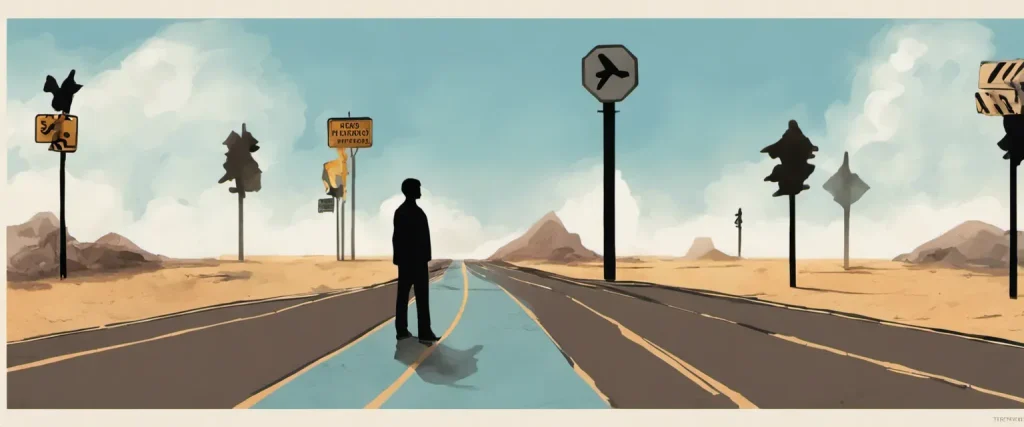In the thought-provoking book “Year Zero” by Ian Buruma, readers are transported back to the tumultuous period following World War II when defeated nations were confronted with the daunting task of rebuilding their shattered societies. Buruma, an acclaimed author and historian, focuses on the experiences of Germany, Japan, and China, shedding light on the distinct yet interconnected journeys these nations undertook during this transformative era. With meticulous research and insightful analysis, Buruma eloquently delves into the complex interplay between history, memory, and identity, revealing a nuanced understanding of the profound impact that the aftermath of war had on these nations and their citizens.
Chapter 1: Introduction to Year Zero
Chapter 1 of “Year Zero” by Ian Buruma serves as an introduction to the book and sets the stage for the exploration of the tumultuous aftermath of World War II. The chapter begins by depicting the year 1945, a significant turning point in history, as the moment when the world emerged from the darkness of war into a new beginning. Buruma asserts that 1945 marked the Year Zero, not only due to the end of conflict but also because it was a time of profound political, social, and cultural transformation.
The chapter focuses on three major themes: the collapse of empires, the rise of nationalism, and the birth of new nations. Buruma examines the disintegration of the British, French, and Dutch empires and the subsequent independence movements that emerged in Asia, Africa, and the Middle East. This period witnessed the birth of countless new nations, each grappling with the challenges of nation-building and the question of identity.
Furthermore, Buruma explores the consequences of war on a personal level. He delves into the individual experiences of soldiers, prisoners, refugees, and survivors, highlighting the profound psychological and physical scars they endured. The author also discusses the difficulties faced by the millions of displaced individuals who were uprooted from their homes and forced to navigate a post-war world rife with uncertainty.
Chapter 1 paints a vivid picture of the global landscape in the wake of World War II, marking the beginning of an era of upheaval and rebirth. Buruma’s goal is to provide a comprehensive understanding of the historical forces that shaped the modern world, focusing on the struggle for independence and the complex legacy left by decolonization. Through captivating storytelling and insightful analysis, this chapter sets the stage for the in-depth exploration of this transformative period in subsequent chapters of the book.
Chapter 2: The Historical Context
Chapter 2 of “Year Zero” by Ian Buruma provides a historical context to understand the events leading up to the end of World War II and the subsequent occupation of Japan by the Allied powers. The chapter delves into key factors that contributed to the rise of Japanese militarism and the country’s imperial ambitions.
Buruma highlights the significance of the Meiji Restoration in the late 19th century, which marked Japan’s shift towards modernization and emulation of Western powers. This period saw the centralization of power in the emperor and the establishment of a professional military, setting the stage for Japan’s increasing militarization.
The author explores the ideological influences of thinkers like Kita Ikki and his theory of national reorganization. Kita’s ideas, rooted in a fusion of nationalism and socialism, outlined the necessity of a coup d’état to take back power from corrupt political elites and transform Japan into a more equal society. These intellectual currents contributed to the ideological climate that justified Japan’s expansionist policies.
Buruma also highlights how Japan’s isolation and subsequent opening up to the West influenced its perception of the outside world. As Japan sought to carve out its own empire, it looked to European colonial powers as models of success. Moreover, the author stresses the importance of the Russo-Japanese War, which as the first major conflict involving an Asian power defeating a European one, bolstered Japan’s confidence in its military prowess.
By analyzing these historical events and ideological currents, Buruma provides readers with an understanding of the complex factors that shaped Japan’s militarism and imperial aspirations leading up to World War II. This sets the stage for understanding the subsequent occupation of Japan and the challenges faced during its reconstruction.
Chapter 3: The Impact of World War II
Chapter 3: The Impact of World War II of the book Year Zero by Ian Buruma focuses on the aftermath of World War II and the profound impact it had on Europe and Japan. Buruma examines how these countries dealt with the physical, political, and emotional devastation caused by the war.
In Europe, the destruction caused by the war was immense. Major cities lay in ruins, millions were displaced, and the loss of life was staggering. Buruma explores the concept of “zero hour,” where countries had to rebuild from scratch and rethink their identities. He uses Germany as a case study, delving into the guilt, shame, and the collective denial that enveloped the nation. The Nazis’ atrocities and the Holocaust were particularly difficult to confront, leading to a complex process of accounting for the past.
Similarly, Japan faced its own reckoning. The country was left in ruins, its imperial ideology shattered, and its society in need of reconstruction. Buruma looks at the post-war reforms, including the introduction of democracy and the dissolution of the emperor’s divine status. He explores how Japan grappled with its wartime atrocities, such as the Rape of Nanking and experiments on live prisoners, and the struggle to reconcile with its past.
Both Europe and Japan experienced a profound sense of loss, but they approached the aftermath in different ways. Europe relied heavily on the aid and influence of the United States, embracing democracy and forging a new path. Japan, on the other hand, retained a sense of continuity, drawing upon its traditional values and adapting them to fit the new world order.
Overall, Buruma’s Chapter 3 provides a comprehensive analysis of the impact of World War II, the process of rebuilding, and the difficult task of facing the past and coming to terms with the immense atrocities committed during the war.
Chapter 4: Post-War Reconstruction

Chapter 4: Post-War Reconstruction of the book “Year Zero” by Ian Buruma examines the efforts to rebuild Germany and Japan after World War II. Buruma juxtaposes their different strategies for recovery, showing how the two nations, facing similar destruction, took contrasting paths.
In Germany, the Allies aimed for denazification, hoping to eradicate the Nazi influence entirely. They purged Nazi officials, held war crime trials, and banned the Nazi party. However, this approach faced obstacles due to the extent of Nazi involvement in various aspects of German society. Many former Nazis retained positions of power, which made complete denazification near impossible. Furthermore, German civilians often denied their knowledge of Nazi war crimes, leading to a collective amnesia concerning the atrocities committed.
The reconstruction of Japan, on the other hand, followed a different course. The United States led the effort to rebuild Japan as a democratic and economic powerhouse. Led by General Douglas MacArthur, a comprehensive cultural change was introduced. The emperor was allowed to remain in a reduced role, but the militaristic ideologies that had driven Japan’s aggression were dismantled. The focus was on rebuilding the economy and transforming Japan into a peaceful, democratic society.
Buruma examines the challenges faced by both Germany and Japan in grappling with their war guilt and confronting their wartime actions. The German case is complicated by the fact that the Allies were also responsible for the carpet bombing of German cities, which resulted in significant civilian casualties. This added complexity to the narrative of collective guilt.
In contrast, Japan faced a different obstacle – its wartime atrocities, particularly the infamous Rape of Nanking and the treatment of prisoners of war. Buruma highlights the difficulty the Japanese government and people faced in coming to terms with these historical events, often either downplaying or denying them.
Overall, Chapter 4 highlights the unique challenges faced by Germany and Japan in the post-war reconstruction period, demonstrating the complexities of rebuilding a devastated nation and reconciling with a war-torn past.
Chapter 5: Cultural Revival and Identity Formation
Chapter 5 of Ian Buruma’s book “Year Zero” focuses on the cultural revival and identity formation during and after World War II in Japan. Buruma explores how the war led to a reevaluation of Japan’s national identity, both domestically and internationally.
The chapter begins by examining the impact of the American occupation of Japan after the war. The occupation forces imposed democratic reforms and aimed to eradicate elements of Japanese culture associated with militarism and imperialism. However, the Japanese people quickly adapted to these changes, transforming them into symbols of their own cultural revival. Traditional arts such as kabuki theater and geisha performances were preserved and promoted as national treasures, showcasing Japanese heritage to the rest of the world.
Buruma also highlights the emergence of a new generation of Japanese artists and intellectuals who embraced modernity while being deeply rooted in their cultural traditions. These individuals sought to reclaim and reinterpret Japan’s unique cultural identity. Prominent figures like Yukio Mishima and Yasunari Kawabata explored themes of identity, honor, and shame in their writings, often delving into the darker aspects of Japanese history.
The chapter further delves into the politics of memory and the complexities of collective guilt in post-war Japan. It examines how the Japanese grappled with acknowledging their responsibility and the atrocities committed during the war, while also feeling victimized by the atomic bombings and occupation. Buruma discusses the construction of war memorials and the contentious debates surrounding commemoration, highlighting the ongoing struggle to reconcile Japan’s wartime past with its future.
In summary, Chapter 5 of “Year Zero” explores Japan’s cultural revival after World War II, tracing the revival of traditional arts, the rise of a new generation of artists, and Japan’s ongoing struggle to reconstruct its national identity while confronting the traumas and legacies of the war.
Chapter 6: Economic Transformation and Globalization
Chapter 6 of “Year Zero” by Ian Buruma discusses the economic transformation and globalization that occurred in the aftermath of World War II.
The chapter begins by examining the impact of decolonization on the global economy. Many former colonies gained independence during this period, leading to a redistribution of economic power. As countries like India and Indonesia sought to develop their economies, they faced challenges such as creating infrastructure and finding their place in the international market. Additionally, Buruma delves into the rise of newly industrialized countries, particularly in East Asia, such as Japan, South Korea, and Taiwan. These countries experienced rapid economic growth through manufacturing and exports, becoming major players on the global stage.
Buruma also explores the shift from Keynesian economics, which advocated for government intervention to stimulate the economy, to neoliberalism, which emphasized free-market principles and deregulation. This shift influenced policymaking across the world, particularly in the United States and the United Kingdom. The author highlights the impact of economic globalization on labor markets and capital flows, as companies sought cheaper labor and expanded production across borders. The consequences of globalization, including job losses in developed countries and exploitation of workers in developing countries, are examined critically.
Furthermore, the chapter addresses the rise of international institutions such as the International Monetary Fund (IMF) and the World Bank, which played a central role in regulating global finance and assisting developing countries. However, Buruma also critiques these institutions for their limitations and biases toward western economies.
In summary, Chapter 6 of “Year Zero” highlights the economic transformations and globalization that emerged in the wake of World War II. It explores the challenges and opportunities faced by newly independent colonies, the rise of East Asian economies, the shift from Keynesian to neoliberal economics, the impact of globalization on labor markets and capital flows, and the role of international institutions.
Chapter 7: Challenges and Controversies
Chapter 7 of the book “Year Zero” by Ian Buruma, titled “Challenges and Controversies,” delves into the complexities and controversies surrounding the historical narratives and collective memories of the Asia-Pacific War. The chapter explores how different countries and societies attempt to confront, reconcile, and sometimes contest their own wartime past and its consequences.
Buruma begins by discussing how, in Japan, the official narrative of the war is often shrouded in denial and selective amnesia. The author highlights the controversy surrounding the Yasukuni Shrine, which memorializes Japan’s war dead, including convicted war criminals. The visits by Japanese political leaders to Yasukuni Shrine have caused tensions with China and South Korea, who view it as a symbol of Japan’s failure to fully acknowledge the crimes committed during the war.
Moving to China, Buruma explores how the Chinese government has harnessed memories of the war to promote patriotism and assert its own legitimacy. This is evident in the creation of the Nanking Massacre memorial and the widespread dissemination of anti-Japanese sentiment, which serves as a political tool for the Chinese Communist Party.
The author also delves into the challenges of dealing with war crimes and seeking justice. He examines the international trials held in Tokyo and the difficulties in obtaining genuine accountability for war crimes committed by members of the Japanese military. Buruma discusses the perspectives of both victims and perpetrators and the struggle to reconcile the past without perpetuating cycles of hatred and revenge.
Furthermore, the chapter delves into South Korea’s complex relationship with its own wartime past, highlighting the divergent narratives between the government and conservative factions who emphasize the heroism of Korean independence fighters and left-wing groups who focus on the suffering caused by Japanese colonialism.
Overall, Chapter 7 of “Year Zero” illuminates the complex and contentious nature of coming to terms with the Asia-Pacific War’s history and legacy. It underscores the ongoing challenges faced by nations in creating a collective memory that acknowledges the past while fostering peace and reconciliation for the future.

Chapter 8: Looking Towards the Future
Chapter 8 of “Year Zero” by Ian Buruma focuses on the aftermath of World War II and the subsequent emerging changes in Japan. Titled “Looking Towards the Future,” the chapter highlights the desire for transformation and reform among the Japanese population.
Buruma discusses how the end of the war and the occupation by Allied forces shifted Japan’s societal and political landscape. There was a sense of relief that the war was over, but also an acknowledgment of the immense damage it had caused. The Japanese people were determined to rebuild and create a new society.
One key aspect of this transformation was the dismantling of the old social hierarchy. The authoritarian rule that had previously defined Japanese society was now rejected. The Japanese embraced democratic ideals and began advocating for civil rights, equality, and freedom. Buruma emphasizes that this shift was not just a result of the Allied occupation but also a genuine desire among the Japanese to break away from the oppressive past.
The chapter also examines the role of the emperor in the post-war era. With Emperor Hirohito no longer seen as a divine figure but a mere mortal, his influence over the Japanese people was questioned. The emperor was kept as a symbolic figurehead, but real power was transferred to the democratic government.
Buruma also delves into the impact of American culture on Japan during this period. The occupation introduced Japanese society to Western ideas, fashion, music, and art. American movies made a significant impression on the Japanese population, shaping their aspirations and ideas about the future.
In summary, Chapter 8 of “Year Zero” explores the aftermath of World War II in Japan and highlights the desire for a society rooted in democracy and freedom. It explores the dismantling of traditional hierarchies, the role of the emperor, and the influence of American culture on shaping Japan’s aspirations for the future.
After Reading
In conclusion, “Year Zero” by Ian Buruma is a thought-provoking exploration of the legacy and repercussions of World War II in various countries, namely Germany, China, and Japan. Through poignant stories and powerful historical analysis, Buruma delves into the complex issues of guilt, memory, and denial that continue to shape the global understanding of the war. The book highlights the importance of confronting and understanding the past, as well as the ongoing challenges of reconciliation and moving forward. Overall, “Year Zero” offers valuable insights into the profound impact of World War II and its aftermath on individuals, societies, and the world at large.
1. The Rape of Nanking” by Iris Chang: This book provides a harrowing account of the brutal massacre that occurred in Nanking during World War II. Chang’s meticulous research and powerful storytelling offer a necessary reminder of the atrocities committed and serve as a testament to the resilience and strength of its survivors. It is a must-read for those interested in understanding the impact of war on civilian populations.
2. Lawrence in Arabia” by Scott Anderson: The book presents an in-depth account of Lawrence’s experiences and contributions as a British intelligence officer in the Arab Revolt against the Ottoman Empire. Anderson explores Lawrence’s motivations, his complex relationships with Arab leaders, and his efforts to rally Arab tribes against the common enemy.
3. “The Ghosts of Berlin” by Brian Ladd: As a follow-up to reading “Year Zero” by Ian Buruma, “The Ghosts of Berlin” by Brian Ladd will deepen your understanding of the impact of history on urban landscapes. Ladd explores the layered history of Berlin, addressing the scars left by war, division, and reunification. This thought-provoking exploration of the city’s past provides a fascinating perspective on memory and identity.
4. “Nothing to Envy” by Barbara Demick: This gripping book offers a glimpse into the lives of ordinary citizens living in one of the world’s most secretive and oppressive regimes. Through extensive interviews and research, Demick paints a vivid picture of the challenges, hopes, and dreams of North Koreans. “Nothing to Envy” is an eye-opening read that showcases resilience and the human spirit even in the face of extreme adversity.
5. Sapiens” by Yuval Noah Harari: In “Sapiens,” Harari takes readers on a captivating journey from the emergence of Homo sapiens to the present day. Covering various aspects of human history, from the cognitive revolution to the spread of agriculture and the rise of empires, Harari offers thought-provoking insights into our species’ unique abilities and the impact of our actions on the planet. This book serves as a brilliant reminder of our shared history and the challenges that lie ahead.



